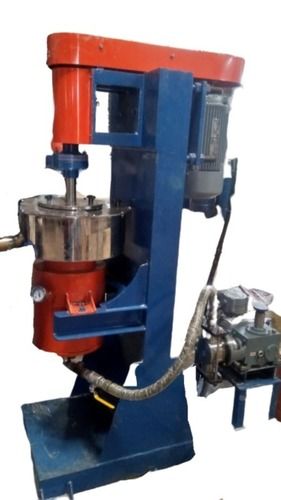
Cooling Sand Mill
Product Details:
Cooling Sand Mill Price And Quantity
- 1 Piece
- 30000.00 INR
Cooling Sand Mill Trade Information
- Cash in Advance (CID), Cash Advance (CA)
- 5 Piece Per Week
- 7 Days
- South America, Eastern Europe, Western Europe, Middle East, Africa, Asia, Australia, North America, Central America
- All India
Product Description
A Cooling Sand Mill is a specialized type of grinding machine designed to achieve fine and uniform particle size distribution while simultaneously managing the heat generated during the grinding process. This is crucial for materials sensitive to temperature changes, such as certain coatings, inks, pigments, and pharmaceuticals.
The Cooling Sand Mill integrates a cooling system, typically in the form of a jacket around the grinding chamber, through which a coolant circulates to absorb and dissipate the heat produced during milling. This helps to maintain a stable temperature inside the grinding chamber, preventing overheating that could degrade the quality of the final product or alter its properties. The mill is equipped with grinding beads that agitate the material at high speeds, breaking it down to the desired particle size while ensuring that the process temperature is kept under control.
Cooling Sand Mills are commonly used in industries where precise control over particle size and temperature is required, such as in the production of high-quality coatings, inks, and other specialty chemicals.
FAQs for Cooling Sand Mill
1. What is the primary purpose of a Cooling Sand Mill?
The primary purpose of a Cooling Sand Mill is to grind and disperse materials while maintaining a controlled temperature within the grinding chamber to prevent overheating and ensure consistent product quality.
2. How does the cooling system in a Cooling Sand Mill work?
The cooling system in a Cooling Sand Mill usually involves a jacketed grinding chamber through which a coolant (such as water or a glycol solution) circulates. This coolant absorbs the heat generated during the milling process and dissipates it, keeping the grinding environment at a stable, controlled temperature.
3. What types of materials are best suited for a Cooling Sand Mill?
Cooling Sand Mills are ideal for processing heat-sensitive materials such as coatings, inks, pigments, and certain pharmaceuticals that require precise temperature control to maintain their properties.
4. What are the advantages of using a Cooling Sand Mill?
The advantages include controlled temperature during grinding, prevention of thermal degradation of materials, uniform particle size distribution, and improved overall product quality, especially for heat-sensitive materials.
5. Can a Cooling Sand Mill handle high-viscosity materials?
Yes, Cooling Sand Mills are designed to handle both low and high-viscosity materials efficiently, making them suitable for a wide range of industrial applications.

Price:
- 50
- 100
- 200
- 250
- 500
- 1000+







 Send Inquiry
Send Inquiry Send SMS
Send SMS English
English Spanish
Spanish French
French German
German Italian
Italian Chinese (Simplified)
Chinese (Simplified) Japanese
Japanese Korean
Korean Arabic
Arabic Portuguese
Portuguese